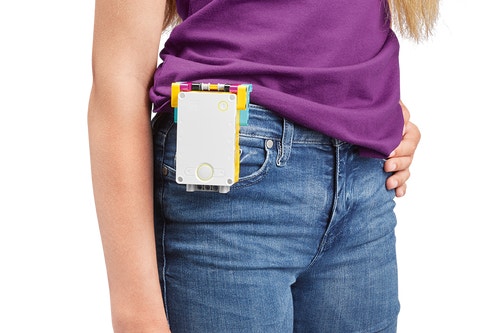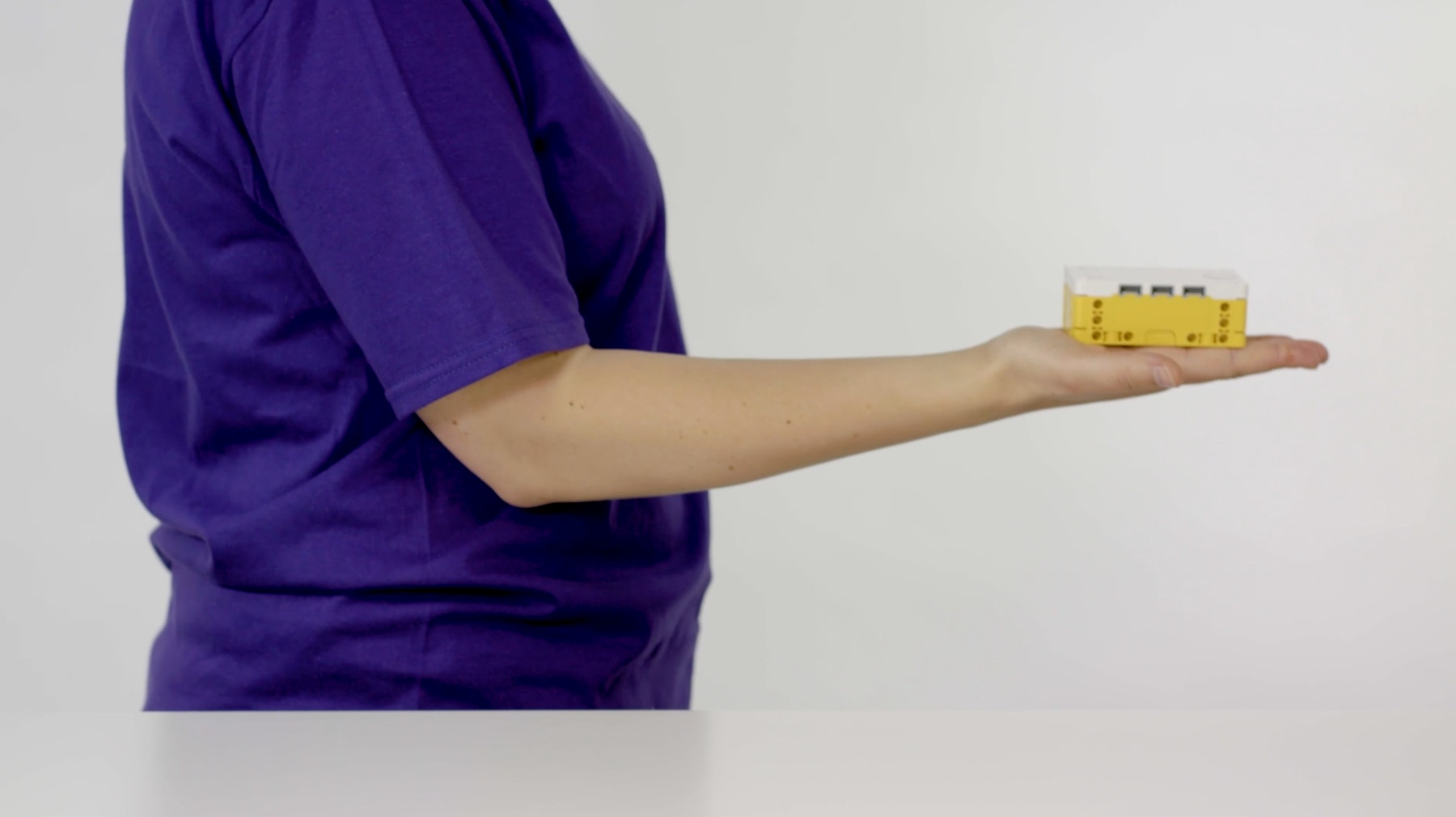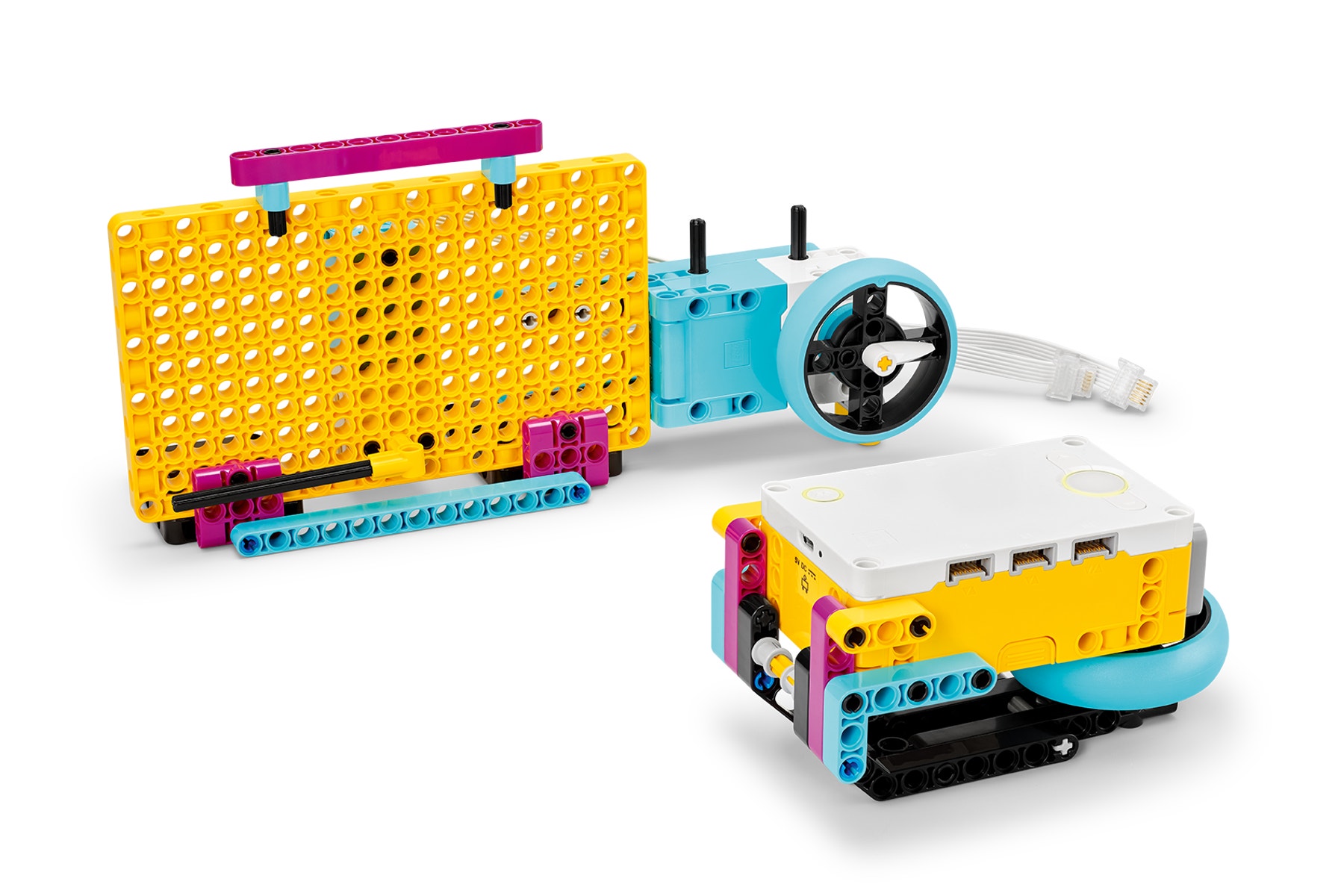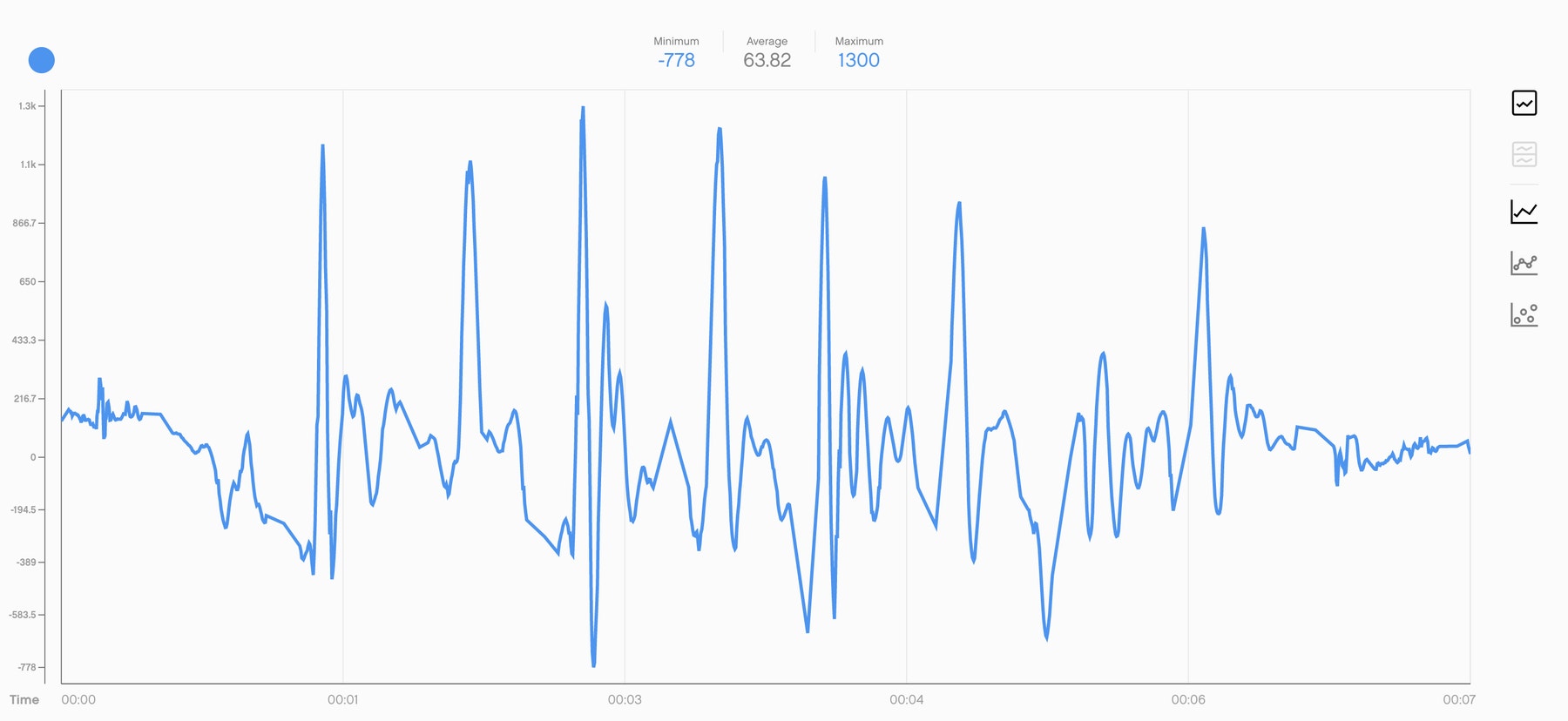Watch Your Steps
Explore kinetic energy during a movement at constant speed.

Engage
(Before the Lesson, 20 Min.)
This lesson explores the kinetic energy of a person who’s walking at a constant speed. Your students will start by measuring the number of steps they've taken. They'll use that value to calculate the distance that’s been travelled, the average walking speed and average kinetic energy value for that motion. The Hub has an internal accelerometer that can detect movement on the 3 axes (i.e. up-down, left-right, front-back). When the Hub is clipped to someone's hip, it moves as they walk and records acceleration values. The resulting graph shows the minimum and maximum values of the recorded acceleration values. The precision of these minimum and maximum values will depend on the vertical position of the Hub while the person is walking. The ‘step count’ precision will depend on the quality of these minimum and maximum values, and the calibrating values that have been used in the program.
Use various materials to engage your students on the topic of kinetic energy.
Ignite a Discussion
Start a discussion by asking questions related to the lesson. Here are a few suggestions:
- How can you measure how fast you're walking?
- How can you measure or calculate the energy of an object in motion?
- Which type of energy is that?
Have your students write down their thoughts as a hypothesis.
Explore
(During the Lesson, 30 Min.)
- Have your students build a pedometer that can count the number of steps they’ve taken. They can create their own models or follow the building instructions in the app to build the Pedometer model.
- Ask your students to try out their models using the suggested program.
- Tell them to look at the graph of acceleration over time and describe what a ‘step’ is.
Explain
(During the Lesson, 15 Min.)
- Allow your students some time to adjust their programs to improve their performance.
- Encourage them to record as much data as possible during their experiments.
- Have them export their data as a CSV file so that they can manipulate it using other software if they wish.
Elaborate
(After the Lesson, 25 Min.)
- If your students still have access to their SPIKE Prime Sets, have them complete the tasks given in the SPIKE App. This will help them to elaborate on their learning with a bit of hands-on activity. Here are some examples:
- Ask them to illustrate their kinetic energy as they walk or as part of their program. As one option, they can program the docking station to accomplish this task.
- If your students don't have access to their sets, have them complete their Inventor Notebooks, or assign one of the extension activities that’s been suggested below. Most of the extension activities can be done using the data that was collected during the hands-on session
- Facilitate a sharing session in which your students exchange information. This can be done using whichever method/tool is the most efficient (i.e. in-person or online).
Evaluate
- Give feedback on each student's performance.
- To simplify the process, you can use the assessment rubrics that have been provided.
Assessment Opportunities
Teacher Observation Checklist
Establish a scale that suits your needs, for example:
Partially accomplished
Fully accomplished
Overachieved
Use the following success criteria to evaluate your students' progress:
- The students are able to program a device that logs data on a line graph.
- The students are able to interpret the values coming from the line graph.
- The students can explain kinetic energy in relation to speed.
Self-Assessment
Have each student choose the brick that they feel best represents their performance.
- Blue: I’m able to graph data using the program that’s been provided in the app.
- Yellow: I’m able to create my own line graph and explain my results.
- Violet: I've created new experiments on my own.
Peer Feedback
Encourage your students to provide feedback to one another by:
Having one student use the coloured brick scale above to score another student’s performance.
Asking them to present constructive feedback to one another so that they can improve their group’s performance during the next lesson. This is an excellent opportunity to use videoconferencing tools or blog posting tools in a blended learning scenario.

Differentiation
Simplify this lesson by:
- Asking your students to recreate the experiment using only the Hub. The data should be relevant for counting steps as long as the Hub is held perpendicular to the ground.
Take this lesson to the next level by:
- Asking your students to build their own pedometers
- Having your students repeat the experiment using a phone or a tablet as a pedometer, then comparing the results of both experiments
- This will require an app that can visualise the device's sensor values

Tips
Building Tips

Coding Tips
This lesson is designed to be played while the hub is connected through USB or Bluetooth. While connected, the data collected by the Hub is streamed directly to your device, and traced in real-time on the Line Graph.
Main Program

Solution Program

Science Data Tips
Here’s an example of the data your students can expect from this experiment.

Extensions
Maths Extension
To incorporate the development of maths skills:
- Ask your students to identify the elements of their experiments that required approximation. Tell them to keep in mind that step lengths aren't always consistent and that pedometers have a limited rate of success (i.e. they're precise within a margin of error).
- Have your students determine how an optimal graph of a person walking would look.
Note: This will require additional time.

Literacy Extension
To incorporate the development of literacy skills:
- Ask your students to research how smartwatches or smartphones count and record steps. Have them write a short explanation of how the technology works, including the percentage of error.
- Have your students explore how pattern recognition, from an AI point of view, helps these smart devices to detect steps.
Note: This will require additional time.

Career Links
The students who enjoyed this lesson might be interested in exploring these career pathways:
- Therapeutic Services
- Engineering & Technology
Teacher Support
Students will:
• Learn to recognise the number of steps that have been taken, as shown in an acceleration graph over time
• Convert a step count into the average speed and average kinetic energy when walking
LEGO® Education SPIKE™ Prime Set
Device with the LEGO Education SPIKE App installed
ACSIS125
Collaboratively and individually plan and conduct a range of investigation types, including fieldwork and experiments, ensuring safety and ethical guidelines are followed
ACSSU155
Energy appears in different forms, including movement (kinetic energy), heat and potential energy, and energy transformations and transfers cause change within systems.
ACMNA208
Solve problems involving direct proportion. Explore the relationship between graphs and equations corresponding to simple rate problems.
ACMNA193
Plot linear relationships on the Cartesian plane with and without the use of digital Technologies.
ACMNA194
Solve linear equations using algebraic and graphical techniques. Verify solutions by substitution.
ACMNA178
Given coordinates, plot points on the Cartesian plane, and find coordinates for a given point.
ACELY1725
Plan, draft and publish imaginative, informative, and persuasive texts, selecting aspects of subject matter and particular language, visual, and audio features to convey information and ideas.
ACELY1736
Create imaginative, informative, and persuasive texts that raise issues, report events and advance opinions, using deliberate language and textual choices, and including digital elements as appropriate.
ACTDIP027
Define and decompose real world problems taking into account functional requirements and economic, environmental, social, technical and usability constraints.
ACTDIP026
Analyse and visualise data using a range of software to create information, and use structured data to model objects or events.
ACTDEP037
Select and justify choices of materials, components, tools, equipment, and techniques to effectively and safely make designed solutions.
ACTDEP038
Independently develop criteria for success to evaluate design ideas, processes and solutions and their sustainability.




